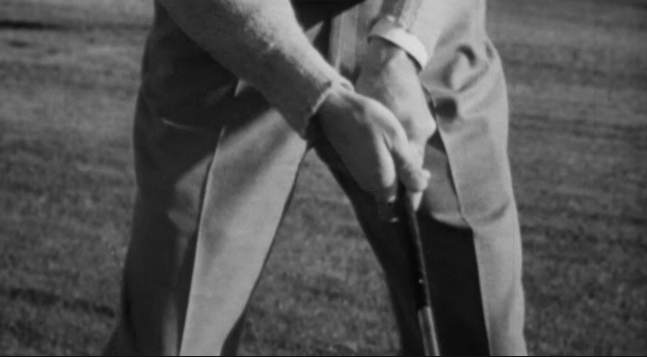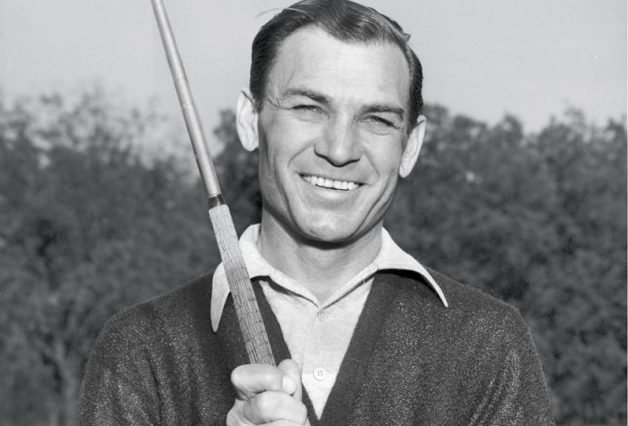Q&A With Israel DeHerrera On Hogan The Documentary
/Debuting Monday and Tuesday June 17-19 at 9 pm ET, Golf Films looks at the life and legend of Ben Hogan.
With limited commercial interruption thanks to sponsor Charles Schwab, Hogan is narrated by Emmy Award-winning actor Kyle Chandler, and produced for 13-time Emmy Award winner Israel DeHerrera. He answered some questions about how the film came together.
GS: Let’s talk genesis of this film. How long has this been in the works and what was the goal in tackling such a complicated figure?
ID: Was sitting around wondering what was going to be next and was nosing around on YouTube and found an interview Hogan did with Ken Venturi at the 1983 Colonial. It was only about 12 minutes long, but I was immediately transfixed. He spoke in a staccato tone that had me hanging on every word. So I dug deeper and read Curt Sampson's biography. I read it cover to cover in two days and knew that we really needed to try and bring this story into a visual documentary form.
The film has been two years in the making but that coincides with the release of two other films that debuted last year and five others that are currently in production.
GS: When did your fascination with Hogan begin?
ID: When I saw the Commercials for Hogan apex irons in the early 1990's. Seeing Hogan in that yellow sweater at Riviera taking full swings was just mystical.
Q: What is your best interview get and person you most wished you could have interviewed and did not?
ID: Best interview was Curt Sampson. He was our Shelby Foote. We also sat down with Ben's niece Jacque Hogan. It was pretty cool to get a first person account of the accident and the recovery as well as the Hogan family history
Person I wished I could of interviewed is pretty easy…Hogan!
Q: Craziest place or effort made to research Hogan?
ID: We went everywhere: Dublin, Texas, Glen Garden G.C, Shady Oaks, Colonial, Riviera
Carnoustie Scotland, Merion GC, Cherry Hills, et cetera.
But finding the Hogan collectors was HUGE. John Seidenstein of Fort Worth and Mark Baron of San Diego are Hogan freaks. They both have massive collections and exhibits in their homes dedicated to Hogan. We are always looking to add additional layers and give these films a present day feel and this really helped
Q: There are reenactments in the film. Tell us what goes into the thinking on those and is there consternation given in using them given how strong the visuals and storytelling is with a subject like Hogan?
ID: This was a difficult decision. There simply was not enough footage of Hogan's career to be able to tell the story we wanted to tell so we decided to do re-enactments. We found Christo Garcia who spent five years of his life dedicating himself to copying Hogan's swing. We wanted to be as genuine as possible so we flew him to Shady Oaks for a shoot and to Merion to shoot there on the East Course. That said, I was very conscious of that fact that having someone trying to replicate Hogan’s swing was sacrilegious, so we only tried to use tight shots of hands, legs, shoulders etc. We tried to avoid showing an entire full swing.
Hogan’s childhood was another reason we needed to do re-creations. There are only of handful of photos of Ben during his childhood. I am very happy with how these turned out. We spent many hours casting, blocking, searching for the proper locations, actors, props etc. and I think it shows during the childhood scenes and the famous caddie tournament he played against Byron Nelson at Glen Garden. We also rented out an old house in LA to shoot his re-creations of his recovery from the accident.
GS: : Thing that most surprised you about Hogan in your research?
ID: I have to give credit to Curt Sampson here. He really did all the heavy lifting in terms of research and brought Hogan to life for a generation of fans when he released his biography in the late 1990’s. Our goal was to do the best possible job in bringing him to life in a visual documentary form that will hopefully engage and give birth to a whole new audience.
I was just surprised at how difficult this man’s life really was. I knew a little bit about Hogan but not everything. Charles Dickens and Oliver Twist had it easy compared to this guy. He is just an amazing story of perseverance.
























